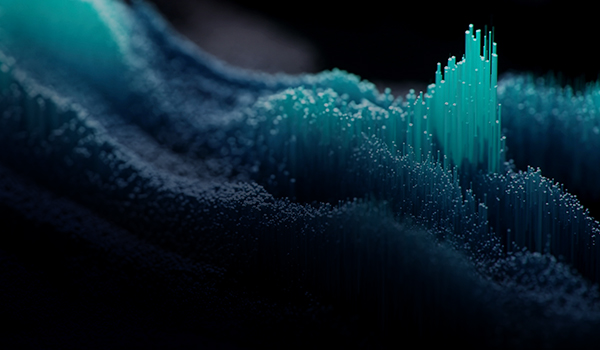
Across industries, learning and development (L&D) teams are working harder than ever—launching new programs, rolling out platforms, adapting to hybrid work, and responding to fast-changing skill demands.
But for all that effort, one question keeps coming up from leadership:
What difference is it actually making?
If your team struggles to answer that, you’re not alone. Many organizations are waking up to the reality that even well-designed training won’t move the needle unless it’s intentionally built to drive business outcomes.
This gap between learning activity and business impact is one of the biggest challenges facing L&D today. And solving it requires more than better content or more efficient delivery—it demands a mindset shift.
The Illusion of Completion
Let’s start with the metrics. It’s common to track things like:
- Completion rates
- Learner satisfaction
- Hours spent in training
- Assessment scores
And while these indicators tell you something about learner engagement or experience, they fall short of the real question: Did this change anything?
Did customer service improve?
Did compliance issues drop?
Did the team hit its performance goals?
When L&D relies solely on surface-level metrics, it ends up speaking a completely different language from the business. And that’s when the disconnect starts.
Training ≠ Transformation
Here’s the thing: most training programs don’t fail because they’re bad. They fail because they weren’t designed with outcomes in mind.
It’s easy to assume that high-quality content, good design, and modern delivery methods are enough to make learning effective. And while those things do matter, they don’t guarantee business results.
Training can raise awareness. It can introduce new tools, policies, or ideas. But if it doesn’t translate into behavior change, performance improvement, or measurable results—it hasn’t done its job.
This is the distinction between learning delivery and learning impact. Many organizations are good at the former: they check the boxes, roll out the modules, and keep the LMS humming. But too few are intentionally designing learning with the end goal in mind—what’s supposed to be different once the training is complete?
And that’s where transformation happens:
- When an onboarding program reduces time-to-productivity by 30%
- When safety training leads to fewer incidents on the floor
- When sales enablement leads to a measurable bump in revenue
- When leadership development results in stronger retention and internal promotions
Training that doesn’t lead to transformation is just information.
Unfortunately, that’s what many business leaders have come to expect from L&D—a well-meaning function that creates activity without driving change. And that perception won’t shift until the strategy does.
If you want your learning programs to be seen—and valued—as strategic, they have to do more than teach. They have to move the business.
And that requires planning for outcomes from the start, not measuring them as an afterthought.
Why the Gap Persists
If aligning learning with business goals is so important, why do so many organizations struggle to do it?
The short answer: it’s harder than it sounds.
Training is delivered in a vacuum
- In many organizations, training is built reactively. Requests come in, courses go out—but little time is spent asking whether learning is the right solution or how it connects to bigger objectives. Without that strategic link, training may be well-designed—but ultimately irrelevant.
Success isn’t clearly defined
- L&D and the business often measure success in different ways. Without clear, shared goals, it’s tough to know whether a program actually made a difference—or what difference it was supposed to make in the first place.
Measurement is an afterthought
- Many teams still default to tracking completions, surveys, or seat time because it’s easy and accessible. But these metrics don’t tell the full story. Without a measurement strategy built into the design phase, it’s nearly impossible to track meaningful impact later on.
Teams are stretched thin
- Even the most strategic L&D professionals face real-world constraints. Limited resources, access to data, or stakeholder engagement can all slow progress. When you’re juggling requests and managing platforms, it’s tough to step back and focus on outcomes.
And let’s be honest—sometimes we’re just too busy executing to stop and ask: Is this solving the right problem?
Moving Toward Outcome-Driven Learning
Bridging the gap starts with asking better questions.
Instead of “What training do people need?”
Ask: “What’s the business trying to achieve—and where can learning help?”
Instead of “How many people completed the course?”
Ask: “What’s different now that they’ve taken it?”
Here’s what an outcome-driven approach looks like in practice:
- Start with the Business Problem
Whether it’s high turnover, lagging sales, or safety incidents—define the problem in business terms before designing any training.
- Align With Stakeholders
Involve business leaders in shaping learning objectives. If they don’t see how it connects to their goals, they won’t prioritize it.
- Design for Behavior Change
Content alone doesn’t drive performance—application does. Build programs that support practice, feedback, and on-the-job transfer.
- Measure What Matters
Track indicators that reflect real impact: behavior, performance, business KPIs. This is where models like Kirkpatrick and predictive analytics come into play (and we dive deeper into these in our ROI eBook).
The Payoff of Alignment
So what happens when L&D and business goals are aligned?
Everything changes.
Instead of simply tracking course completions, you’re tracking performance. Instead of reacting to requests, you’re helping shape strategy. And instead of trying to “prove value,” your results speak for themselves.
When learning is connected to outcomes, you unlock:
- Stronger executive buy-in. Leaders stop seeing training as a cost center and start seeing it as an investment that delivers real returns.
- Smarter resource allocation. You can prioritize initiatives that actually move the needle—because you know what’s working and why.
- Clearer communication of value. You’re not just reporting numbers; you’re telling a compelling story about business impact.
- Faster time to insight. With outcome-focused measurement in place, you can adjust, improve, and scale programs more effectively.
- A more strategic seat at the table. L&D becomes a trusted partner in solving business problems, not just delivering content.
Alignment isn’t about adding more work—it’s about getting more from the work you’re already doing. It allows your team to be proactive, focused, and impactful. And it gives you the tools to demonstrate that impact in ways the business understands.
Ultimately, the payoff of alignment is this:
Training stops being something people “go through.” It becomes something the business relies on to grow.
Where to Go From Here
You’re already investing time, energy, and resources into learning—now it’s time to make sure those efforts are driving the outcomes that matter most.
At MindSpring, we partner with L&D teams to help them align learning with business goals, measure what matters, and deliver programs that create lasting impact. It’s not about starting over—it’s about building on what you’re already doing, with greater clarity and confidence.
Curious what that could look like for your team?

Because learning should do more than inform—it should transform.


